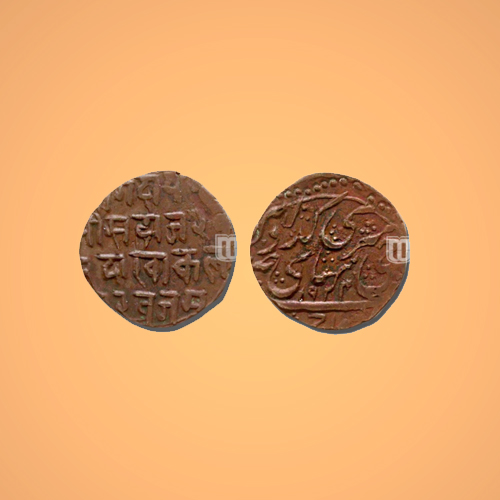Devanagari and Persian Legends on Coin
2021-07-16 Fri
Ladakh was inhabited by Indo-Aryans of Mons and Dards according to Herodotus, Nearchus, Megasthenes, Pliny, Ptolemy and Puranas. During the 1st century AD, Ladakh was under Kushan rule. In the 2nd century, Buddhism was widespread in the eastern part of Ladakh while the Bon religion dominated the western part.Due to its topographical extent, it came under the influence of Tibet from the east and the Chinese from Central Asia in the 8th century. Control over Ladakh changed regularly from China to Tibet and vice versa. King Nyima-Gon was feudatory of the Tibetan empire who broke out from his original Tibet Empire and established the kingdom at Ladakh. This led to the migration of the Tibetan population to Ladakh and Buddhism philosophy flourished for the second time from the northwest side. He established his kingdom in the eastern side of present-day Ladakh.
The coin represents the unity of scripts as it has Devanagari and Persian legends together. The copper Paisa was issued by Dogras of Jammu in 1924 VikramSamvat at Ladakh mint.
Image Courtesy: Mintage World
Latest News
-
Ghiyath Shah as Heir Apparent
2025-09-25 ThuGhiyath Shah was the ruler of the Malwa Sultanate, reigning from 1456 to 1500. From 1456 to 1469, he...
-
Malwa Sultan Mahmud Shah Silver Coins
2025-09-11 ThuMalwa Sultan Mahmud Shah minted silver coins in round and square flans. <br><br> For round coins,...
-
Malwa Sultan Mahmud Shah Billon coin
2025-08-26 TueMalwa Sultan Mahmud Shah's billon coins followed three weight standards: 100 rati, 96 rati, and 80 r...
-
Fascinating Archaeological Facts on Postage Stamps - 91
2025-08-23 SatRhinoceros is one of the oldest land mammal species existing in India. There are five species of rhi...
-
Fascinating Archaeological Facts on Postage Stamps - 90
2025-08-23 SatUthiramerur, a Village in Kanchipuram, Tamil Nadu, is notable for its Temple inscriptions that descr...

